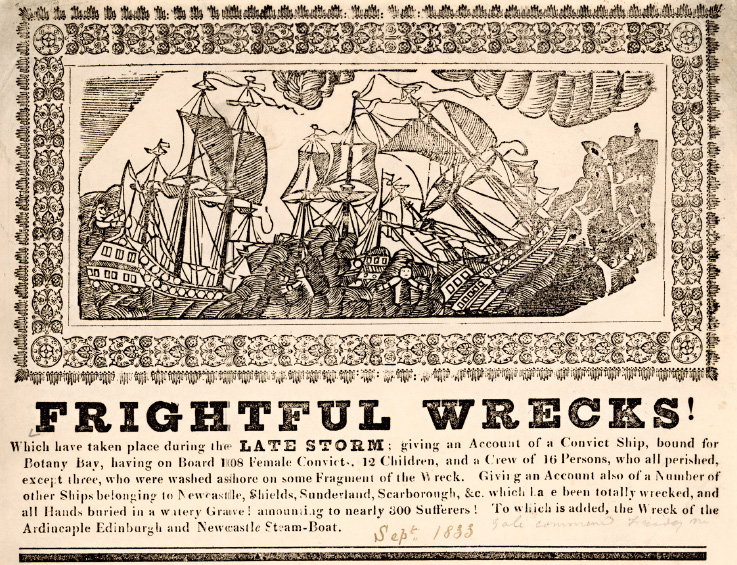
A newspaper report about shipwrecks in 1833.
Australia has always been a tough place to survive in. There are few earthquakes or serious tsunamis, but the continent suffers extreme weather. What Australians in the south call ‘summer’ is the ‘wet season’ in northern Australia. ‘The wet’ brings huge cyclones that sometimes move across the continent, causing floods. An ocean system called La Niña causes floods while another one called El Niño causes terrible droughts. With or without drought, there are bushfires that can devastate our environment.

A newspaper report about shipwrecks in 1833.
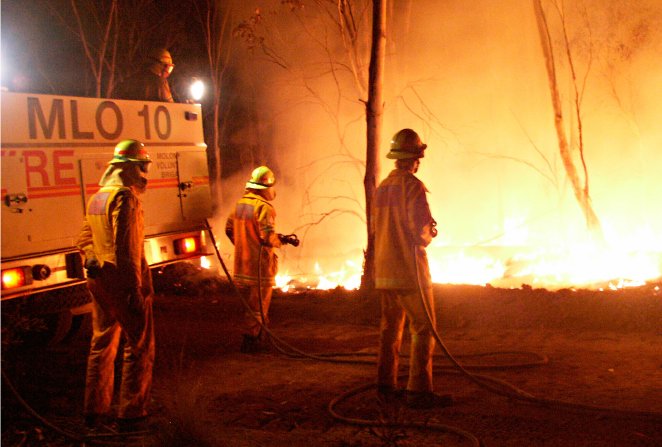
Firefighters in the Brindabella Ranges, near Canberra, 2003.
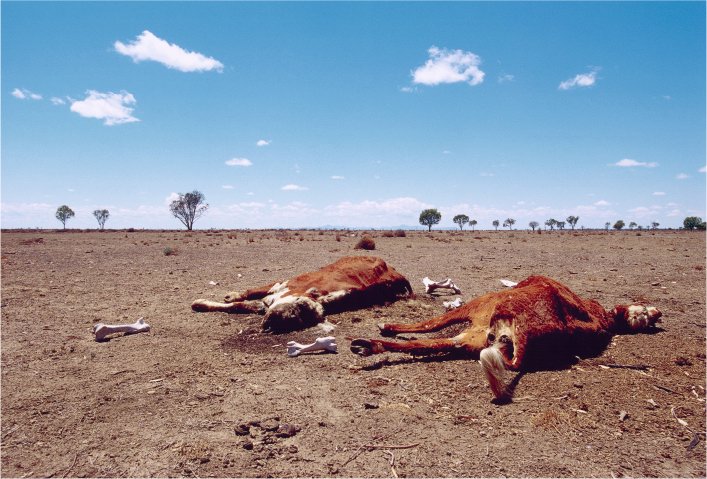
Victims of drought, Fords Bridge, New South Wales, 2002.
In the early 1900s, a homesick Australian girl holidaying in England wrote a poem that she called Core of My Heart. In the 1890s, she had seen a drought break on Torryburn Station in the Hunter Valley of New South Wales. She had marvelled as the brown countryside quickly turned green after the rain. Dorothea Mackellar’s poem, later called My Country, summed up her feelings about this land of contrasts:
I love a sunburnt country,
A land of sweeping plains,
Of ragged mountain ranges,
Of droughts and flooding rains.
Australia’s life forms have been shaped by an endless cycle of parched summers, droughts, bushfires, cyclones and floods. An ancient drought, followed by a flood, created one of the oldest records of Australian life—the Devonian fish-kill site at Canowindra in New South Wales. Droughts continue to cause huge stock losses for farmers, who sometimes are even forced to sell their farms.
It was just good luck that no-one died in the Hawkesbury floods of 1809. The people who had built their farms beside the Hawkesbury River did not recognise the signs of past floods, such as broken branches and other rubbish deposited in the tops of trees. All they saw was good farming land.
During the gold rushes in the 1850s, gold diggers who ‘washed for gold’ in creek beds and camped close to their claims also needed to be able to read the signs. A Danish man called Claus Gronn, who wrote about his experiences, saw a wall of water 2.5 metres high rushing down a creek towards a group of Chinese diggers. He shouted a warning, and all but one of them got clear. Luckily, the last man was able to cling to a tree until the waters went down.
The Wiradjuri people of the Gundagai area in New South Wales would have saved many lives if the white settlers had accepted their warnings about building too close to the Murrumbidgee River. In June 1852, about 80 white people drowned when a flood arose overnight. Many more would also have drowned if two Wiradjuri men in bark canoes had not rescued about 40 of them.
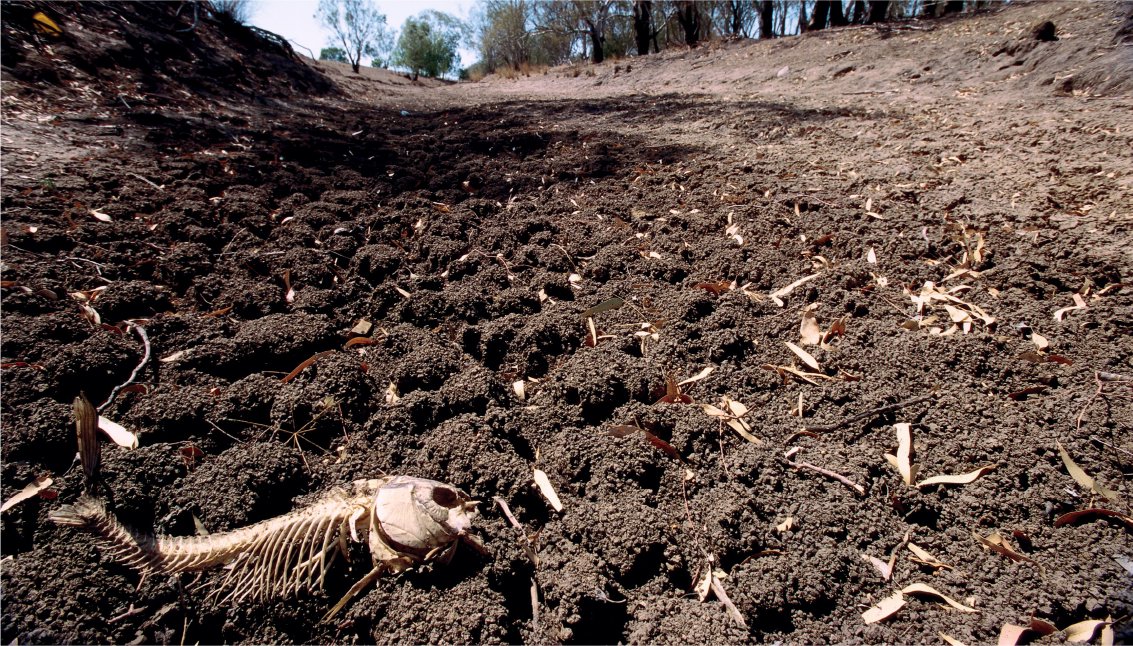
Drought dried up this river bed near Coonamble in New South Wales in 2002.
The city of Brisbane, which sits on a narrow river valley at the end of a large water catchment, has had many problems with floods over the years. Eight of the ten worst floods since white settlement happened in Brisbane before 1900. The 1974 flood was the fourth highest, while the 2011 flood was only the 11th highest— although it also caused a lot of damage.
Pelicans’ playground
Sometimes floods can have positive effects. The salt lakes of inland Australia are usually flat and dry plains of white salt. Once in a while, though, the monsoon season in the Top End creates a large low pressure zone, surrounded by damp air and clouds. When this moves over the land, torrential rain falls on the inland. If the storm pushes far enough south, the rain falls into a maze of channels that carry the water into Lake Eyre in northern South Australia.
The land is flat and so the water moves slowly, at about a man’s walking pace. A lot soaks into the ground, but some reaches Lake Eyre. Then the salt dissolves, the mud softens, and the eggs of tiny prawn-like crustaceans and fish hatch. Algae that have been lying dormant below the salt come back to life. The crustaceans eat the algae, the fish eat the crustaceans, and then the pelicans arrive to eat the fish.
Somehow pelicans sense that there is water in the usually dry centre of Australia. That instinct has evolved over many thousands of years. The pelicans know when Lake Eyre is full of fish to eat, but free of the predators that eat their young chicks. Once they arrive, the pelicans build their nests and feast on fish, while raising as many baby pelicans as they can.
As the water dries up again and the fish disappear, the adult pelicans fly off, often abandoning the chicks that cannot yet fly. But, next time a low pressure zone comes in over the coast and delivers water to the lake, the chicks that previously were able to leave come back to breed.
Very few Aboriginal people were harmed by those cyclones, mainly because they knew when a dangerous storm was coming and where the best places were to seek shelter.
Cyclones
If the low pressure in the centre of a weather system is low enough, it becomes a cyclone. The low pressure generates very fast winds that go clockwise around the eye of the storm. These winds can rip the roofs off buildings, hurl ships and boats onto the shore, and push over trees, while the torrential rains cause floods.
Australia’s most devastating cyclone was called Cyclone Tracy. It hit the Northern Territory capital of Darwin on Christmas Eve in 1974, destroying much of Darwin and killing 71 people. The city looked like a war zone. No-one celebrated Christmas there that year.
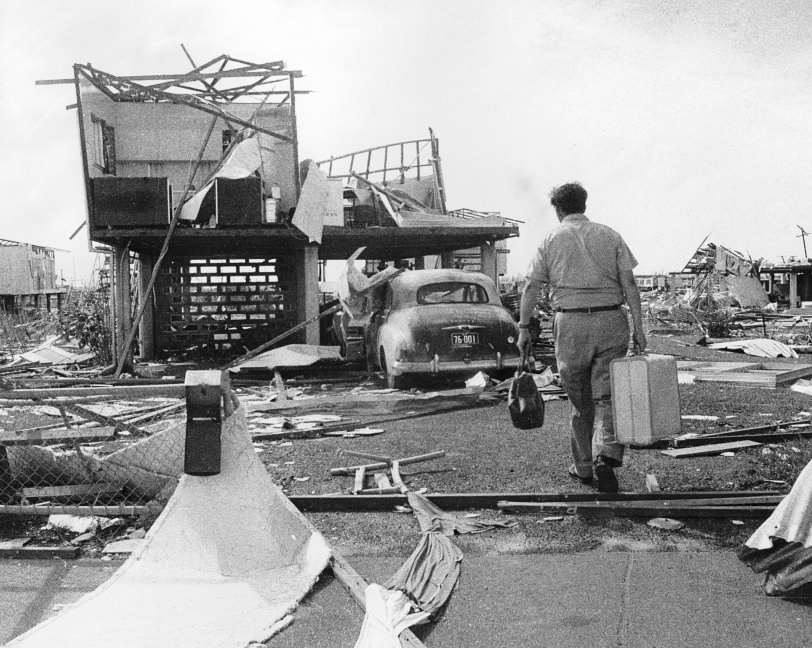
This home was wrecked after Cyclone Tracy devastated Darwin in 1974.
Broome, in northern Western Australia, has also been hit by two tropical cyclones, both of which destroyed Broome’s pearling fleet. The first, in 1884, killed 140 people, while the one in 1935 took 141 lives.
Very few Aboriginal people were harmed by those cyclones, mainly because they knew when a dangerous storm was coming and where the best places were to seek shelter. Frogs calling for mates and the changed behaviour of birds were signs that told Aboriginal people when rain was coming.
Fighting fire
Bushfires were mentioned in Australian newspapers as early as 1826. However, the Aboriginal custodians of the land had been using controlled bushfires as a part of what is now called ‘firestick farming’ for a long time before white settlement. They used fires to keep undergrowth under control and to produce new growth to attract the animals they hunted, such as kangaroos. Firestick farming had the added advantage of making major wildfires less likely, in the same way that hazard-reduction burning does today.
Once the local Aboriginal people died, or were killed or chased away by white settlers, hardly any controlled burning occurred for many years. This meant that, until the 1950s, there were many disastrous fires, which people had to fight as best they could.
The first recorded firestorm occurred in Victoria on Black Thursday in February 1851. It left 12 people, a million sheep and thousands of cattle dead. It was followed by Red Tuesday in February 1898, again in Victoria, in which 12 people died. And then Black Sunday, 14 February 1926, in the Gippsland area of Victoria killed 31 people, as well as destroying land and buildings.
It did not stop there. As the population rose, so did the number of deaths in bushfires and the amount of destruction the fires caused. Victoria’s Black Friday in 1939 saw 71 people dead, while Black Tuesday in Tasmania in 1967 killed 62 people, with a further 900 injured and more than 7,000 made homeless. South Australia’s Ash Wednesday in 1980 destroyed 51 homes and left 40 people injured, while Victoria’s Ash Wednesday in 1983 killed 75 people.
Even after the introduction of controlled burning and hazard reduction, bushfires can still sometimes become uncontainable forces of nature. When a firestorm assaulted the ‘bush capital’ of Canberra in 2003, it destroyed more than 500 homes, but amazingly only four people died. Victoria was not so lucky on Black Saturday in February 2009. In all, 173 people died when 400 fires burned out of control in the state in a single day.
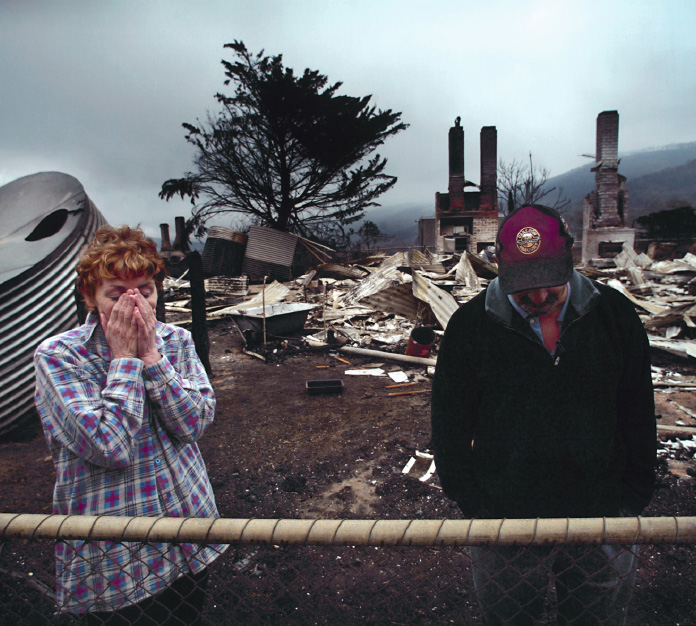
Residents of the Omeo Valley, in Victoria, look at the damage after a fire on Australia Day, 2003.
After this devastating firestorm in Victoria, the fire danger warning system was adjusted, with the new category of ‘catastrophic’ added to the previous five-point scale. Despite these catastrophic events over the years, Australians are lucky that there have not been even more bushfire disasters.
The highest death tolls in disasters in Australia have usually come from shipwrecks. Many people died in the days of sail, when Dutch ships raced eastward pushed along by the westerly winds called the ‘Roaring Forties’, then turned north to sail to what is now Jakarta in Indonesia. Some of them were wrecked off Western Australia’s coast, which juts out into the Indian Ocean.
Victoria’s ‘Shipwreck Coast’ is near the Great Ocean Road. Sailing ships heading east towards Melbourne and Sydney often hit the shore where it pushes out to the south. At least 638 vessels have been wrecked there.
One of the worst wrecks was that of the Cataraqui off King Island in Bass Strait in 1845. Of the probably 408 people aboard the ship, only nine survived. The sailing ship Dunbar was wrecked on the rocks at the Gap, just near Sydney’s South Head, during a severe storm in 1857. There was only one survivor, who was thrown onto the rocks near where the ship hit. He managed to survive despite not being found for two days. The other 121 crew and passengers all perished.
Sadly, the end of the age of sail did not make the sea safer. The steamship Admella was wrecked off the coast of South Australia in 1859. While 89 people died, 24 survived, many of them clinging to the wreckage for up to a week waiting to be rescued.
While there have been a number of train disasters in Australia, the worst was in 1977, when a commuter train derailed at Granville, in Sydney’s western suburbs, and ran into the supports of a road bridge. The bridge collapsed on two of the train’s carriages, killing 83 people and injuring many more.
The Hero of Gundagai
In 1852, Wiradjuri men Yarri and Jacky Jacky helped save about 40 people from drowning in a devastating flood in Gundagai in New South Wales. Risking their lives in the floodwaters in fragile bark canoes, they ferried people to safety from rooftops and the branches of giant river red gums. They both received bravery awards, and a memorial was erected to Yarri, the ‘Hero of Gundagai’.
Another disaster occurred when a mentally ill man opened fire at the historic Port Arthur tourist site in Tasmania in 1996, killing 35 people and wounding another 23. His actions led to the tightening of gun laws in Australia.
No doubt Australia will suffer from more natural and man-made disasters in the future. However, being prepared, helping others in trouble, and following the orders of emergency services personnel will help to ensure that there is as little damage and loss of life as possible.
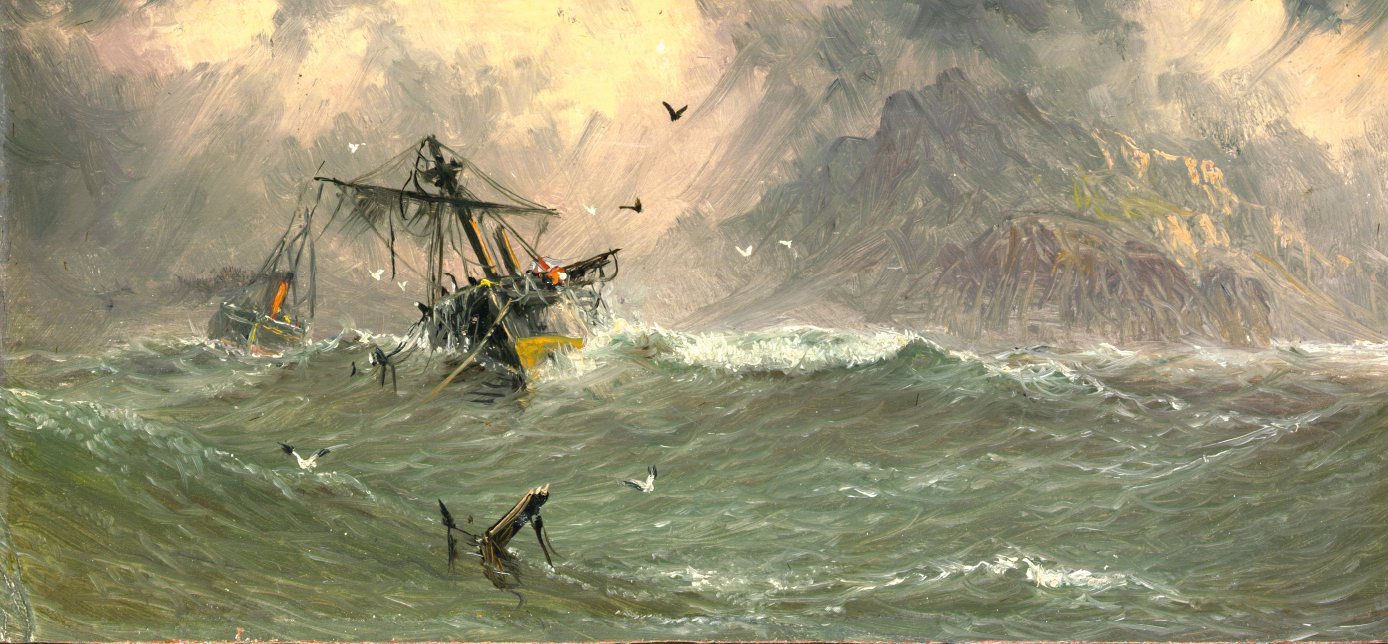
By the 1860s, steam tugs could sometimes save a damaged ship.
Related newspaper articles of the time
Sydney bush fires, 1832: Lane Cove, Homebush etc.
Explore more